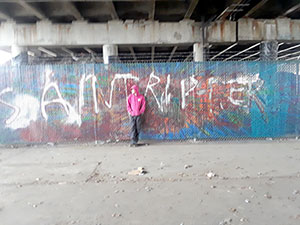
Peter Lancaster’s “The Old and the New” illustrated Somerville’s older culture and how it has been changing, due to gentrification. — Photo by Peter Lancaster
By Shira Laucharoen
Through the image of a chain link fence, we see a scene of congested traffic, lanes of cars crowded on McGrath highway, in the city of Somerville. The photograph captures “only a glimpse of Somerville’s chaotic rat race,” the statement for the picture reads. Taken by student Cassian Ortiz, the representation of a neighborhood scene is part of a photo essay called Legoland, a critique of what the city has become, as a result of gentrification. Another image offers a look at the giant Lego giraffe at Assembly Row.
“Although gentrification is causing rents to skyrocket and forcing people to move out, at least we have Legoland to distract us in the meantime,” Ortiz’s essay reads.
Ten photo essays were displayed at the Whose Somerville? exhibit that opened at City Hall on December 12. Students from Full Circle Alternative High School participated in an activism course led by English teacher Sarah Blanchard and Social Studies teacher Tim Dempsey.
The unit focused on the subject of gentrification and how it has changed Somerville, while guest photographers were invited to the school to teach students techniques. Students were taught to make a complex argument and support it with evidence, through the form of photos, in order to present a point of view and demonstrate how art can influence social change.
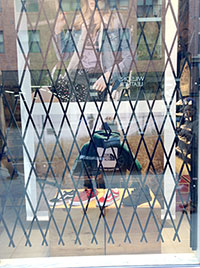
Nick Milonopoulus’ photo essay “Barriers” will be on displayed in the student exhibit “Whose Somerville” at City Hall through mid-January. — Photo by Nick Milonopoulus
“We live in a world full of negativity and problems which feel insurmountable,” said Blanchard. “It would be great for students to feel they can be agents of change and have control over their future.”
Through their essays, students remarked on how the face of Somerville has been changing. Nick Milonopoulus, in his essay Barriers, photographed new shops that have arisen in the city, capturing a Puma shoe store and an upscale Anne Taylor Loft at Assembly Row. While these additions may appear to be beneficial, he questioned who is benefitting from their installation, writing that, “Most of the poor can’t afford living here, so they can’t enjoy the benefits of that stuff.” Milonopoulus also wrote about his family’s experience of being kicked out of their house, for financial reasons.
Peter Lancaster, who created the photo essay The Old and the New, explained that old houses are being torn down and turned into condos. “People who have the money to afford them don’t see how people are struggling,” Lancaster said.
Dempsey said that the exhibit did not express a single point of view but ten different ones, as the students’ individuality shined through.
Rene Pires Canales, through his essay The Somerville Life, strived to show how while Somerville may be changing, its old character and life still remain. One image depicted an old cement chair that was left behind when the East Somerville High School was rebuilt. While a futuristic playground was built around it, the chair remained standing.
Karinny Oliveira stated that, “Change is good, because nothing lasts forever,” developing an essay called Phantasmagoria that represented the positive aspects of gentrification.
Full Circle Alternative High School is a school for students who have experienced academic setbacks, using a more personalized approach to learning. Students in grades 6-12 attend the tight knit school, which has smaller classes of ten or fewer students.
Full Circle has a therapeutic community and uses a competency based learning system. This particular unit was part of the school’s project based learning curriculum, which encourages students to engage in solving authentic, real world problems. Dempsey said that it is important for young adults to learn about activism and feel that they can be a part of social change.
“We’re raising citizens,” Dempsey said. “That’s what you need to live in the world.”
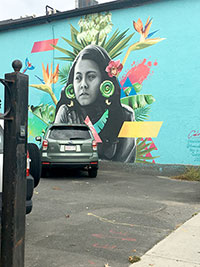
Karinny Oliveira’s “Phantasmagoria” was featured in the exhibit. — Photo by Karinny Oliveira
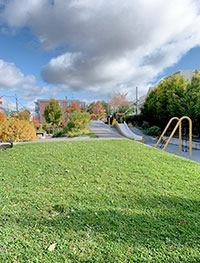
Rene Pires Canales’ “The Somerville Life” represented both positive and negative sides to change in the city.— Photo by Rene Pires Canales
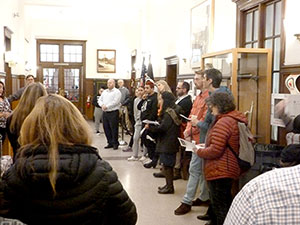
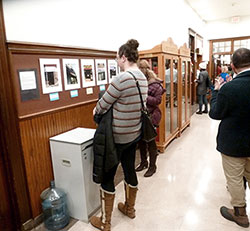
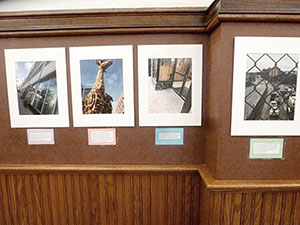
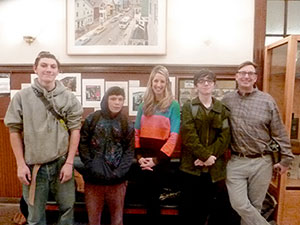
— Additional photos by Peter Lancaster

 https://www.portersquarebooks.com/
https://www.portersquarebooks.com/













It’s very sad that most older people in this city will not be able to say the school they went to growing up, or places they enjoyed going to back then are still around. Every school I went to here is gone, and even the High School isn’t going to be the same building. All these buildings closed due to lack of money, or being bought up for development.
It’s also sad that people are always told that gentrification will make the city better for the existing people to live in, but don’t tell those same people that the people it will benefit will not be them.
Instead, it will benefit those with more money to come in and live, forcing the existing residents out because they can no longer afford to live in that city because it’s now too good for them to live there.
It’s that old Catch 22: we live in a bad or poor area because we have no choice, but when we are given the chance to improve, it’s now unaffordable. So, low-income families have to live like low-income families, because any benefits gained by gentrification will force them out to find another bad or poor area, until that area is gentrified as well, and then it starts all over again.
Like the wildlife in these areas, they’re forced out of their homes by development. I guess we should follow the coyotes and see where they go.